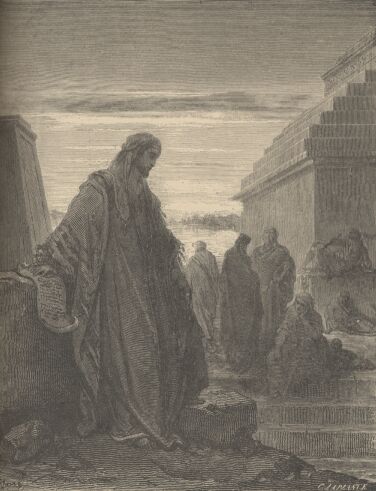DANIEL.

|

|
Respecting the parentage or family of Daniel, the fourth ofthe great Hebrew prophets, nothing is known, though he appears tohave been of noble if not of royal descent (Daniel i, 3). When,in the third year of the reign of King Jehoiakim (607, 606, 605,or 604 B.C.), Jerusalem was first taken by Nebuchadnezzar,Daniel, then a youth, was among the captives carried to Babylon.By the king's orders, he, with others of the Jewish youth, waseducated for three years (Daniel i, 3-7). At this time Danielacquired the power of interpreting dreams (i, 17), which he usedwith such advantage in expounding a dream of Nebuchadnezzar, thathe was made ruler over the whole province of Babylon (Daniel ii,46-48). Daniel's interpretation of Belshazzar's famous visionhaving been fulfilled by the capture of Babylon by Darius, thatconqueror promoted Daniel to the highest office in the kingdom(Daniel vi, 1-3). The prophet also prospered greatly during thereign of Cyrus (Daniel vi, 28).
The book of Daniel is written partly in Chaldaic or Syriac(the vernacular Aramaic language spoken by the people ofPalestine), and partly in sacred Hebrew. It is manifestlydivisible into two portions. The first (chapters i-vi) narratingthe details of the prophet's life, and the second (chaptersvii-xii) setting forth his apocalyptic visions. Much doubt hasbeen cast upon the authenticity of the work. The evidentreference in the eleventh chapter to the conquest of Persia byAlexander the Great, which took place about 330 B.C., or morethan two hundred years after Daniel flourished, has led manymodern critics to believe that the work was composed in the timeof the Maccabees.
Dore's picture appears to be intended to represent the prophetmeditating over one of the many visions which came to him.